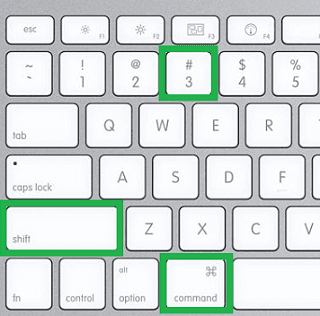
Screen printing multi-color designs may seem daunting for beginners, but with the right techniques and tools, you can master this art form. From creating stencils to perfecting color registration, there are many aspects to consider. This guide will break down the essentials, offering tips to help you achieve professional results while making the process enjoyable and rewarding.
In this article, we will also explore how tools like BX fonts can enhance your multi-color screen printing projects, ensuring sharp, eye-catching typography.
Understanding Screen Printing Multi-Color Designs
Screen printing is a technique where ink is transferred onto a surface using a mesh screen and stencil. Multi-color designs involve using multiple stencils—one for each color in the design. The process requires precision to ensure proper alignment and vibrant results.
Why Choose Multi-Color Screen Printing?
- Versatility: Create vibrant designs for textiles, posters, and more.
- Durability: Printed designs are long-lasting and resistant to fading.
- Customization: Ideal for branding, promotional materials, and personalized items.
Essential Tools and Supplies
Before diving into screen printing, ensure you have the necessary tools:
- Screen and Frame: Choose a mesh screen with the appropriate thread count for your design.
- Stencil Materials: Photographic emulsion for creating detailed stencils.
- Squeegee: For even ink application.
- Inks: Use high-quality, water-based, or plastisol inks.
- Registration Marks: Essential for aligning multi-color designs.
- Design Software: Tools like Adobe Illustrator for creating digital designs, including BX fonts.
Step-by-Step Guide for Beginners
1. Create Your Design
Start by designing your artwork. Keep it simple if you’re a beginner. Separate each color into individual layers, as each layer will require its own stencil.
- Use BX fonts for text elements. These embroidery-ready fonts ensure sharp, clean typography, making them ideal for screen printing.
2. Prepare the Screens
Coat each screen with a light-sensitive emulsion and allow it to dry in a dark area. Print each layer of your design on transparent film.
3. Expose the Screens
Place the transparent film over the coated screen and expose it to UV light. The light hardens the emulsion except where the design blocks it. Wash away the unhardened areas to reveal the stencil.
4. Set Up the Printing Station
Secure the screen in a printing press or frame. Use clamps to hold the screen steady. Ensure registration marks align across all screens to maintain accuracy.
5. Apply the Ink
Pour ink onto the screen and use a squeegee to spread it evenly. Lift the screen to reveal your print. Repeat for each color layer, allowing each to dry before applying the next.
6. Cure the Ink
Dry the printed design using a heat gun or conveyor dryer. Proper curing ensures the ink bonds well with the substrate, enhancing durability.
Tips for Success with Multi-Color Screen Printing
1. Master Registration
Accurate alignment is critical for multi-color designs. Use registration marks to ensure each layer aligns perfectly. Test prints can help identify and correct misalignments.
2. Choose the Right Inks
Different substrates require different inks. Water-based inks are eco-friendly and ideal for textiles, while plastisol inks offer vibrant colors and durability.
3. Use Quality Screens
The mesh count of the screen impacts the detail of your design. Higher mesh counts are better for intricate designs, while lower counts are suitable for bold prints.
4. Practice Ink Consistency
Consistent ink viscosity ensures smooth application. Stir inks thoroughly and test on scrap materials before starting your project.
5. Leverage BX Fonts
When adding text to your designs, BX fonts provide professional-quality typography that stands out. Their precision ensures your prints look polished and readable.
Common Challenges for Beginners and Solutions
1. Ink Bleeding
Ink bleeding occurs when too much ink is applied or the stencil is not secure. Use the right squeegee pressure and check stencil adhesion.
2. Misregistration
Even slight misalignment can ruin a multi-color design. Use a printing press and registration marks for consistent results.
3. Fading Colors
Fading often results from improper curing. Ensure inks are heated to the manufacturer-recommended temperature.
How BX Fonts Elevate Multi-Color Screen Printing
BX fonts are a valuable addition to your screen printing toolkit. Originally designed for embroidery, these fonts offer unmatched precision and sharpness, making them perfect for text-based elements in screen printing.
Advantages of BX Fonts
- Versatility: Suitable for both embroidery and screen printing projects.
- Ease of Use: Integrate seamlessly into design software like Adobe Illustrator.
- Professional Results: Create clean, crisp text that enhances your designs.
Applications of Multi-Color Screen Printing
Multi-color screen printing is widely used across industries, including:
- Fashion: T-shirts, hoodies, and custom apparel.
- Advertising: Posters, banners, and promotional materials.
- Corporate Branding: Logos on uniforms and merchandise.
- Art and Home Décor: Wall art, cushion covers, and more.
Sustainability in Screen Printing
Consider adopting eco-friendly practices to reduce your environmental footprint:
- Use Water-Based Inks: These are less toxic and easier to clean.
- Recycle Screens: Reclaim and reuse screens to minimize waste.
- Optimize Energy Use: Invest in energy-efficient curing equipment.
Mastering Screen Print Multi Color Designs is a rewarding journey that combines creativity with technical precision. By understanding the role of tools like stencils and leveraging the benefits of BX fonts, beginners can achieve professional results. With practice, attention to detail, and the tips outlined in this guide, you can transform your ideas into stunning multi-color prints.
FAQs
1. What are the essential tools for multi-color screen printing?
Essential tools include screens, stencils, squeegees, inks, and registration marks. For text-based designs, consider using BX fonts for sharp typography.
2. How do I avoid ink bleeding?
Ensure the stencil is secure and use consistent squeegee pressure. Test prints can help identify and resolve issues.
3. Can I use BX fonts for screen printing designs?
Yes, BX fonts are versatile and provide clean, professional-quality text, making them ideal for screen printing.
4. How do I achieve accurate color registration?
Use a printing press and align registration marks across all screens. Perform test prints to fine-tune alignment.
5. What substrates work best for beginners?
Cotton fabrics and paper are excellent options for beginners due to their forgiving nature and ease of ink absorption.

































